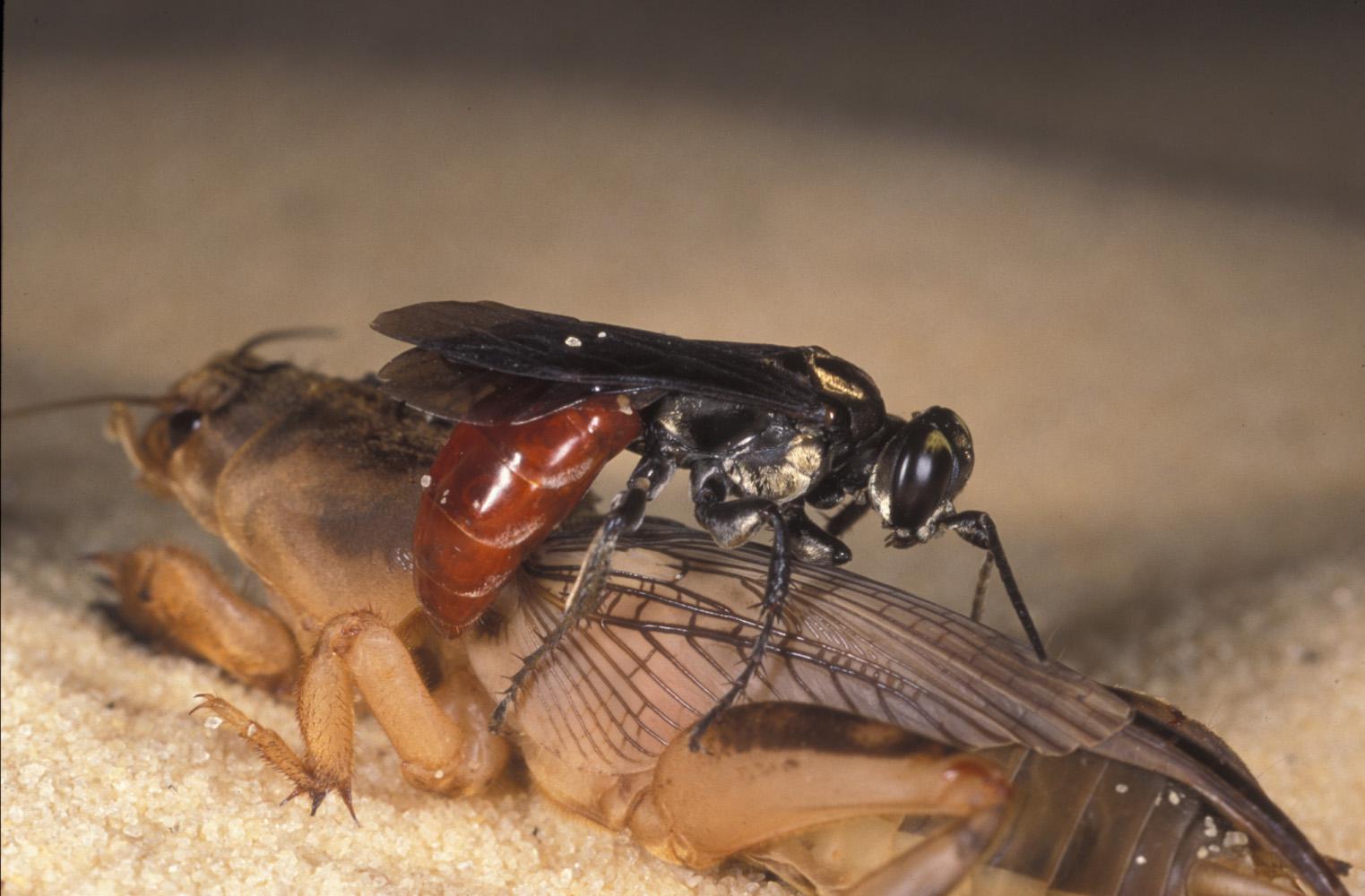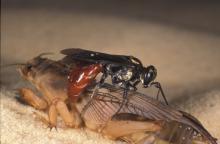Information Possibly Outdated
The information presented on this page was originally released on October 28, 2004. It may not be outdated, but please search our site for more current information. If you plan to quote or reference this information in a publication, please check with the Extension specialist or author before proceeding.
Mississippi Coast welcomes tiny wasp
MISSISSIPPI STATE -- Most people don't go looking for wasps, except with a spray can of insecticide, but when David Held looks for them, it's to encourage, not annihilate, a particular type of wasp.
Held is an entomologist at Mississippi State University's Coastal Research and Extension Center in Biloxi. In early October, he found a tiny wasp on the Great Southern Golf Course in Gulfport that could be good news for golf courses and homeowners on the Coast.
"The Larra bicolor is an aggressive hunter of Scapteriscus mole crickets, a major pest in turfgrass," Held said. "Homeowners and golf course managers in the Southeast spend millions of dollars a year to protect their lawns and fairways from the damage this pest causes."
The Scapteriscus mole cricket, a native of South America, arrived in the southeastern United States about 1900, probably as a stowaway in the ballasts of ships. With no natural predators in the Southeast, it spread rapidly, causing significant root damage as it burrowed beneath pastures, turfgrass and row crops.
"There are native mole crickets in the Southeast, but their numbers are kept in check by the native wasp Larra analis," Held said. "The native wasp, however, does not usually attack the imported variety of mole cricket."
Unsuccessful efforts were made in the 1940s to import Larra bicolor wasps from South America to Florida, but they were abandoned when the pesticide chlordane was discovered to be an effective and economical method of mole cricket control. Interest in a biological control method was revived when chlordane was banned by the U.S. Environmental Protection Agency in 1978.
"A University of Florida researcher received permission to import Larra bicolor wasps from Bolivia in 1988, and a population was established at Gainesville in 1993," Held said. "They spread to the surrounding areas of Florida, but have never been found along the Mississippi Gulf Coast until now."
The first specimen Held found was sent to the University of Florida, where scientists confirmed that is was a Larra bicolor. The wasp is tiny -- less than an inch long -- and black with a red abdomen. It attacks Scapteriscus mole crickets, temporarily paralyzing its victims and laying eggs on them. The crickets recover and go on their way, only to be attacked and killed by developing wasp larvae in about two to four weeks. Larra bicolor wasps seldom attack native mole crickets because they are not successful hosts for their larvae.
Brooks Mosley, superintendent at the Great Southern Golf Course, welcomes this wasp.
"A natural control for mole crickets would be very beneficial for us because we get heavy infestations in our sandy soil," he said. "We spend about $30,000 a year on chemical control of the crickets, so it will be good to have another option."
Since finding the first specimen at the Great Southern Golf Course, Held has found Larra bicolor wasps at other courses in Biloxi and Ocean Springs.
"So far, the wasp has only been found at courses adjacent to the Mississippi Sound," he said. "It may be that these sites, being buffered by the coastal waters, provide a suitable microclimate where the wasp can successfully overwinter."
Held is working with Mosley and superintendents at other area golf course to establish plants, such as the wildflower Spermacoce verticillata, or shrubby false buttonweed, to help attract Larra bicolor wasps.
"The nectar of Spermacoce verticillata is a favorite food source of the wasps, but it is not native to Mississippi," Held said. "We also are working to identify native plants that can be used to attract and support these natural enemies of mole crickets."
Contact: Dr. David Held, (228) 388-4710



